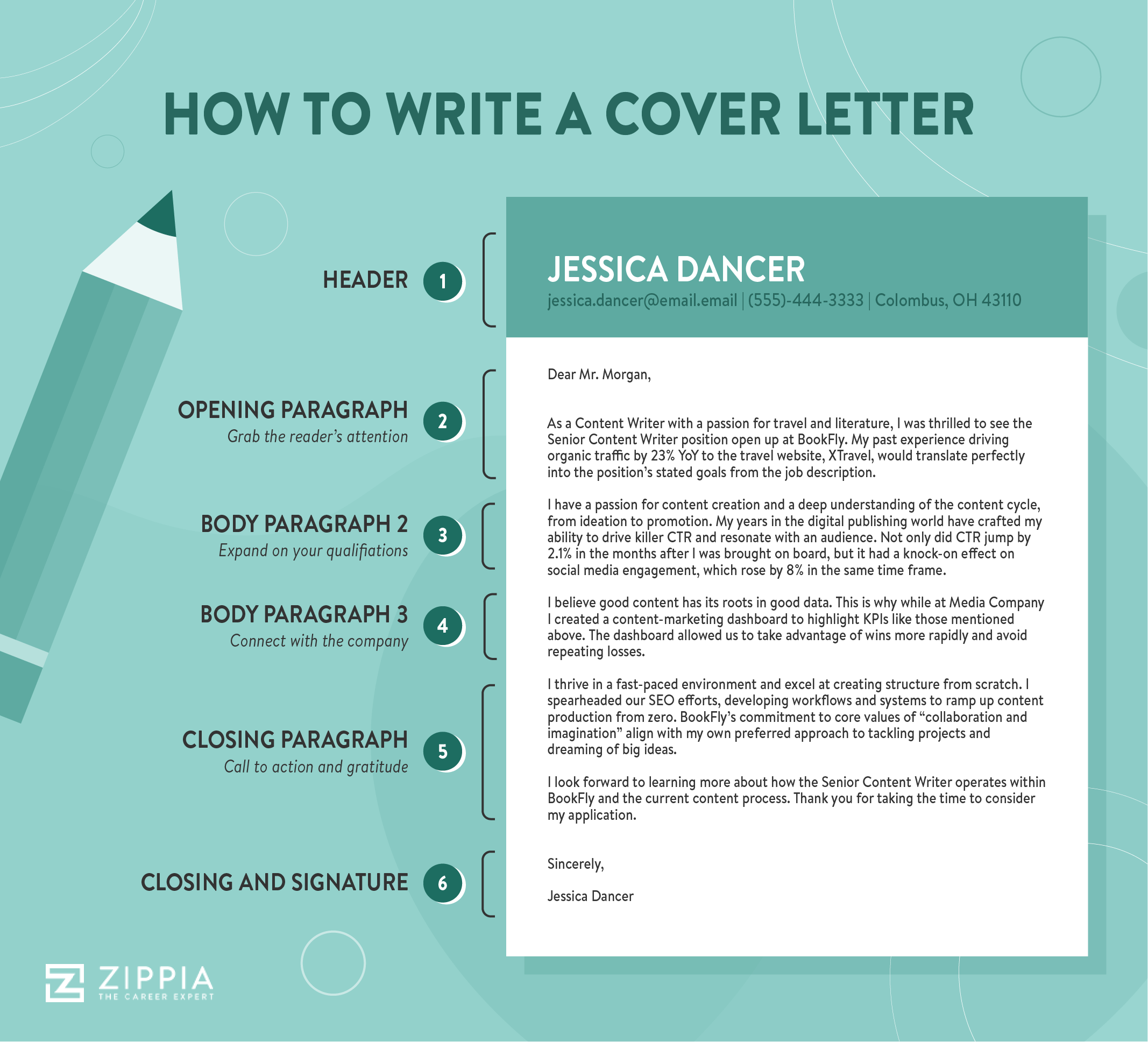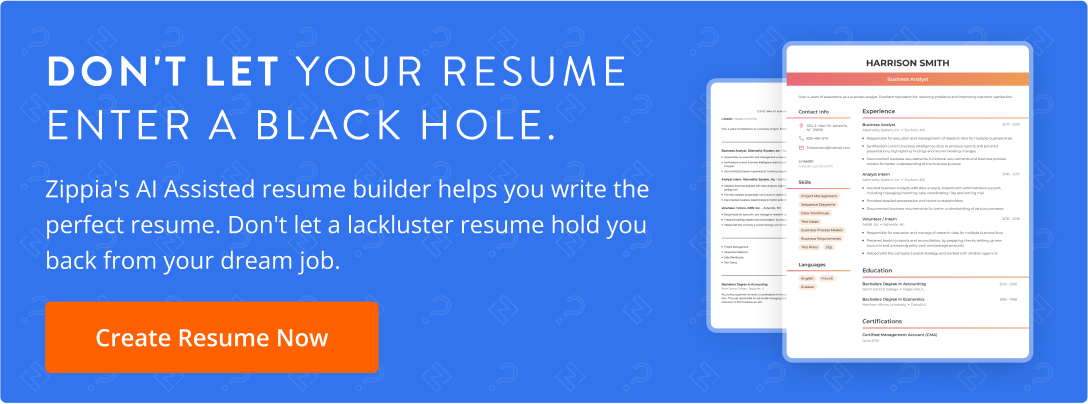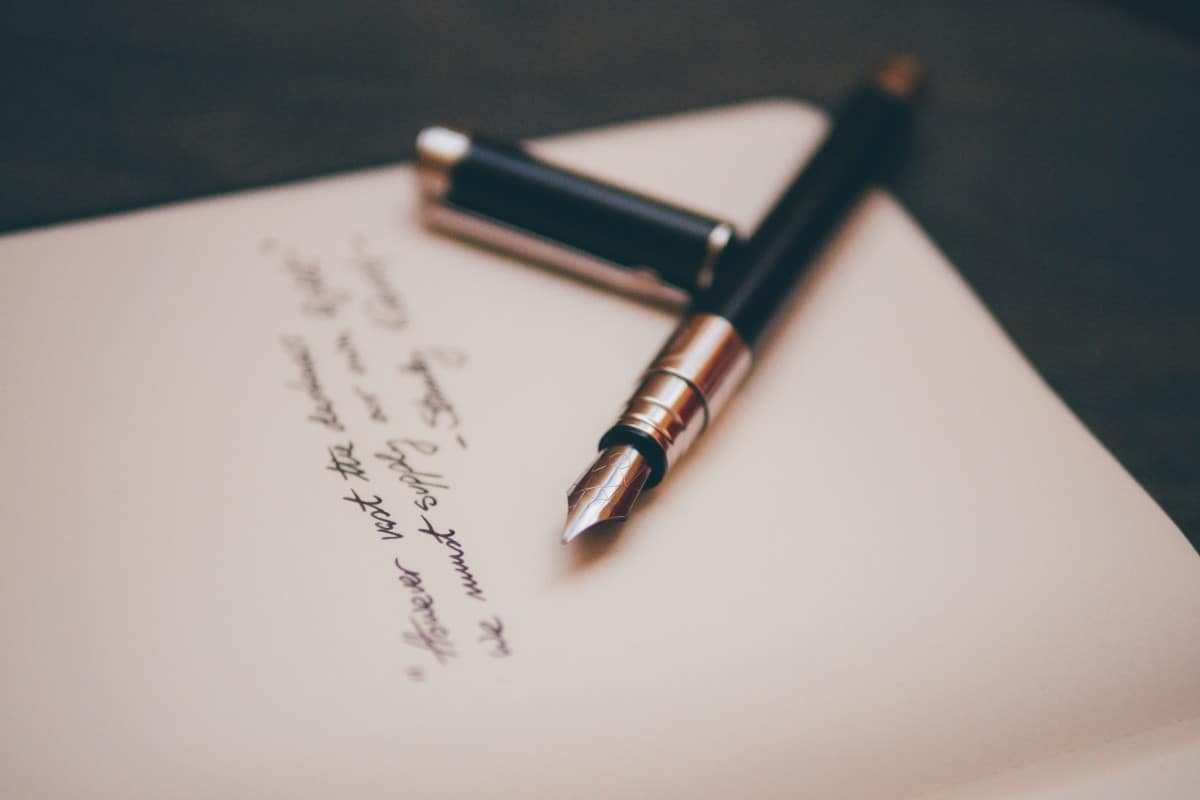Purdue Online Writing Lab Purdue OWL® College of Liberal Arts

Quick Formatting Tips for Cover Letters

Welcome to the Purdue OWL
This page is brought to you by the OWL at Purdue University. When printing this page, you must include the entire legal notice.
Copyright ©1995-2018 by The Writing Lab & The OWL at Purdue and Purdue University. All rights reserved. This material may not be published, reproduced, broadcast, rewritten, or redistributed without permission. Use of this site constitutes acceptance of our terms and conditions of fair use.
Remember that the basic format of a cover letter follows that of a business letter. As you design the page, think about the following:
- Keep it to one page.
- Write one introductory paragraph, one to three paragraphs to highlight your skills, and one concluding paragraph.
- Single-space your cover letter.
- Leave a space between addresses and dates in the heading.
- Leave a space between your heading (contact info) and greeting ("Dear...:").
- Leave a space between each paragraph.
- Leave at least three spaces between your complimentary close ("Sincerely,") and typed name.
- Sign your name in ink between your complimentary close and typed name.
Margins and Alignment
- Use standard margins (one-inch margins, usually).
- Can use smaller margins (to about 0.7-inch) as long as you are consistent on all sides.
- Align all paragraphs to the left of the page. (You can also indent the first line of each paragraph, but that is not used as often.)
Explore Jobs
- Jobs Near Me
- Remote Jobs
- Full Time Jobs
- Part Time Jobs
- Entry Level Jobs
- Work From Home Jobs
Find Specific Jobs
- $15 Per Hour Jobs
- $20 Per Hour Jobs
- Hiring Immediately Jobs
- High School Jobs
- H1b Visa Jobs
Explore Careers
- Business And Financial
- Architecture And Engineering
- Computer And Mathematical
Explore Professions
- What They Do
- Certifications
- Demographics
Best Companies
- Health Care
- Fortune 500
Explore Companies
- CEO And Executies
- Resume Builder
- Career Advice
- Explore Majors
- Questions And Answers
- Interview Questions
Cover Letter Spacing and Margins
- Cover Letter Format
- Salutation and Greeting
- Who To Address When Unknown
- How To Start A Cover Letter
- How To End A Cover Letter
- Best Cover Letter Font And Size
- Cover Letter Spacing
- Cover Letter Length
- Key Elements Of A Cover Letter
- How To Write An Address
- Official Letter Format
- Cover Letter Opening
Find a Job You Really Want In
Writing a standout cover letter is about more than just having great content. Coming off as professional in both form and function is going to help you get noticed by hiring managers. That means using proper spacing, margins, indentation, and length. Do these things correctly and your cover letter will be well-organized, clear, and easy to read. Whether you’re sending a physical cover letter or an email, we’ll provide guidelines to make your cover letter format perfect. We’ll also show you a sample cover letter for both a physical copy and an email version. Key Takeaways: Your margins should be 1-inch on all sides, but if you’re going over one page , then you can consider making the margins smaller Your cover letter should be similar to your resume with font and font size, which should be no larger than 12-point font. A cover letter should be between 200-300 words, but try to keep it on the shorter end if possible. In This Article Skip to section Cover Letter Spacing Guidelines Proper Cover Letter Length Cover Letter Examples Margins and Alignment in a Cover Letter Guidelines for Cover Letter Font Sending Your Cover Letter Final Thoughts References Sign Up For More Advice and Jobs Show More Cover Letter Spacing Guidelines
We’ll start with proper cover letter spacing, which is the first thing any hiring manager is going to notice upon first glance. Follow these rules and your page will look professionally done.
Spacing varies slightly depending on if you’re sending a physical cover letter or a digital cover letter.
Physical Copy Guidelines:
Single-space your cover letter
Start with your contact information in the following order:
Your name Your current address City, state, zip code Phone number Email address
Add one space
Write the date
Add the contact information of the letter’s recipient in the following order:
Hiring manager’s name Company Address Company city, state, zip code Hiring manager’s phone number Hiring manager’s email address
Write your salutation
Write 3-4 paragraphs, with one space between each one
Add one space after your final paragraph
Write your closing sign-off (e.g., Sincerely)
Put three spaces between your closing and your typed name
Put your signature in the space between your closing and your typed name
Tip: You can use the same header for your cover letter as your resume.
Email Cover Letter Spacing Guidelines:
Start with a salutation
>Write 3-4 paragraphs, with one space between each one
Add two spaces
Write your contact info in the following order
Full name Position Phone number Email address
If you have a formatted email signature , you can use that for step 8. You can add a digital signature between your closing and contact info if you think it looks snazzy (or, better yet, you think your prospective employer will think it looks snazzy).
Tip: When emailing a cover letter, keep your subject line clear and professional. State your name, the position title, and the fact that you’re sending along documents for an application. It should look something like “Donald Duck — Sales Representative Application.”
Proper Cover Letter Length

Just like your resume, your cover letter should never exceed one page . Ideally, the body of your cover letter should be between 200-300 words (aiming for the lower end of that spectrum is your best bet). Hiring managers have to sift through tons of these cover letters, so keeping things short and sweet is beneficial.
A cover letter should have three paragraphs, four at the most.
Opening paragraph. Your opening paragraph should introduce yourself and your background, grab the reader’s attention with a big accomplishment, and let the company know why you’re applying. If you were referred by someone in the company, this is a good place to mention it.
Body paragraph(s). Your middle paragraph(s) should focus on your professional qualities and experiences that relate to the company for which you’re applying. Don’t repeat credentials from your resume, because the hiring manager has probably already looked at it. Dig deeper and highlight why you’re the perfect fit for the position.
If you’re having trouble deciding which elements of your professional history are best to include here, read the job description again. Note the required qualifications and significant responsibilities.
Then, look back on your experience for moments where you applied similar skills or achieved results comparable to what the new company wants to achieve. Any time you can give percentages, dollar figures, or numbers to describe your duties, it will be more impactful.
Closing paragraph. Your closing paragraph thanks the employer for considering your application. You can also express how eager you are to learn more about the role and the company.
Cut out unnecessary information and you should have no trouble fitting everything in a 300-word count maximum.
Tip: Never address your cover letter with “To whom it may concern” . Do your best to find the name of the person who will be reading your cover letter, and address it to him or her. If your best efforts turn up nothing or you’re still unsure, use “Dear Hiring Manager” or one of its alternatives .
Cover Letter Examples
Physical copy example:
Jonathan Cash 123 Apple Street Anywhere, CO 12345 (999) 765-4321 [email protected] August 22, 2020 Phyllis Vance 789 Company Lane Somewhere, CO 56789 (543) 210-9876 [email protected] Dear Ms. Vance, I was excited to see a job posting for the Sales Representative position on NextCompany.com. I have been working in sales since I was a child with my first lemonade stand, and have 6+ years of formal experience working in sales. During my time at CurComp, I have developed my knowledge of marketing strategies, my ability to generate interest in new products, and my skill at maintaining strong, lasting customer satisfaction. My proudest achievements as a sales representative have been exceeding sales quotas by 10% or more each quarter, closing $900,000 in 2018 (25% above goal), and ranking as the top salesperson in the company in Q2 of 2019. Helping customers see the value of products that I truly believe in is the greatest source of satisfaction in my professional life. I would be thrilled to be in a position where I could implement my proven strategies to sell products offered by NextCompany, which have garnered the attention and excitement of industry experts for years. Thank you for considering me for the Sales Representative position. I look forward to discussing the role further and learning how my brand of salesmanship could fit into NextCompany’s business model. Sincerely, Jonathan Cash
Email cover letter example:
Dear Pat Murphy, ABC Inc. needs an Accountant who is determined, organized, and has years of expereince maintaining financial records. Luckily, I meet all three of those criteria. After getting an MBA with a specialization in Accounts from the University of Florida, I began working in the financial sector. For more than six years, I’ve helped companies upkeep and maintain financial records, run risk assessments, and handle all payroll and invoice documentation. I’ve also dedicated my Saturday’s performing pro bono accounting consultation for a local food bank. I was glad to see that ABC is also greatly involved with aiding the impoverished areas of our city, which further drew me to apply for this role. In my current position with XYZ Corp., I lead a team of 12 junior accountants managing a total of $10M+ in assets and cash. By setting up a new invoice system for contractors, I was able to reduce overhead by 8% and increase the efficiency of contracted projects by 6%. My proudest moment at XYZ, though, was finding a budgetary error that was bleeding over $15,000 monthly from the company. When I identified and fixed this problem, XYZ awarded me “Top Performer of the Month” in January 2020. With me, you get more than a regular CPA — you get a top-notch presenter who thrives in collaborative, deadline-driven work environments. I look forward to speaking more about how I can help XYZ achieve its goals in the years to come. Sincerely, Joanne Diggerly Johnston, HI 54321 (555) 432-1098 [email protected]
Margins and Alignment in a Cover Letter
Like most documents, your cover letter should be aligned to the left. You should use 1-inch margins on all sides, but if you’re going over one page, then you can consider making the margins smaller. But really, if you’re sticking to our cover letter length guidelines (more on that below), then you should have no issues with standard 1-inch margins.
At no point should you indent any of your paragraphs. And don’t go bigger than 1-inch margins, because it’s going to look super obvious that you’re trying to make the letter’s content look beefier than it is.
If you’re writing your cover letter in Microsoft Word, you can change margins by pressing Page Layout followed by Margins . If you’re writing your cover letter in Google Docs, you can change margins by pressing File and then Page Setup .

Guidelines for Cover Letter Font
A good rule of thumb is to make your cover letter as aesthetically similar to your resume as possible. That means using the same font. Basic, everyday fonts like Times New Roman, Arial, Helvetica, or Calibri are all good options.
Font size should generally be 12-point. If you’re trying to include more content, you could consider bringing that down to 10-point, but play around with margins as well to see which option allows you more space while keeping the letter visually pleasing .
Things to avoid like the plague are: underlining, highlighting, colored lettering, and CAPITALIZING. You can consider using bold or italicized text but use these sparingly to emphasize the key points of your cover letter. And if you choose to use bold, don’t also use italics (and vice versa).
Tip: Look at whether your prospective company uses “serif fonts” (tails at the end of letters, like in Times New Roman) or “sans serif” fonts (no tails at the end, like Arial). Then, use a font in the same style for your resume and cover letter.
Sending Your Cover Letter
If you’re sending your cover letter as a file, make sure to give it an appropriate name. For example, “John-Doe-Cover-Letter” tells the recipient exactly what the file is.
Be advised that many companies use an applicant tracking system when reviewing resumes and cover letters, so using a compatible file format like PDF or .doc is your best bet.
Sending your application documents as PDFs ensures that formatting will remain consistent across devices and operating systems. That makes it a strong choice most of the time, unless the employer specifically asks you not to send a PDF. Instructions directly from the employer always trump any advice we give here.
Final Thoughts
Cover letter spacing and margins might be the last thing on your mind, but they’re the first thing that a hiring manager or recruiter is going to notice. A bit of creativity is great when you’re applying for jobs, but some standards exist for a reason.
Stick to 1-inch margins and single-spaced, unindented paragraphs, and you’ll be off to a great first impression .
Careerservices.illinoisstate.edu. “ PDF .”
Owl.purdue.edu. “ Quick Formatting Tips // Purdue Writing Lab .”
How useful was this post?
Click on a star to rate it!
Average rating / 5. Vote count:
No votes so far! Be the first to rate this post.

Matthew Zane is the lead editor of Zippia's How To Get A Job Guides. He is a teacher, writer, and world-traveler that wants to help people at every stage of the career life cycle. He completed his masters in American Literature from Trinity College Dublin and BA in English from the University of Connecticut.
Matt Warzel a President of a resume writing firm (MJW Careers, LLC) with 15+ years of recruitment, outplacement, career coaching and resume writing experience. Matt is also a Certified Professional Resume Writer (CPRW) and Certified Internet Recruiter (CIR) with a Bachelor of Science in Business Administration (Marketing Focus) from John Carroll University.

Related posts

20 Better Ways To Say “Thank You For Your Consideration”

Cover Letter Examples for Every Situation

Choosing The Best Font For Cover Letters and Resumes

How To Write A Cover Letter Opening (With Examples)
- Career Advice >
- Cover Letter >
- Search Please fill out this field.
- Career Planning
- Finding a Job
- Cover Letters
Cover Letter Paragraph and Margin Guidelines
:max_bytes(150000):strip_icc():format(webp)/ADHeadshot-Cropped-b80e40469d5b4852a68f94ad69d6e8bd.jpg)
Cover Letter Paragraph Guidelines
Cover letter margin settings, how to adjust page margin settings in microsoft word, how to adjust page margin settings in google docs, use your cover letter to make the best impression.
Every resume you send out to a potential employer should be accompanied by a tailored, well-crafted cover letter. Most hiring managers will review cover letters to decide whether it’s worth their time to read the attached resumes. Thus, your cover letter is your “teaser,” the all-important first introduction that explains why you are the right candidate for the job.
When writing cover letters, your paragraphs should be concise, grammatically flawless, and should focus on your qualifications for the job. Ideally, they should also convey an impression of your own unique personality.
A cover letter should include three paragraphs:
- Introduction
- Body/selling pitch
First Paragraph
The first paragraph explains why you are writing. It is your first impression and should contain a basic explanation of who you are and why you are writing. It is also acceptable to describe how you found the position, such as through an online job listing or a recommendation from a professional contact, and why you are interested in the job.
Use the qualifications on the job announcement as a guide for explaining how your past experience makes you a suitable candidate for the job.
Second Paragraph
The second paragraph, known as the body , explains why you are qualified for the position. It is the part of the letter where it is most appropriate to highlight your experience, skills, and attributes that make you a perfect candidate for the job. Don’t restate your entire resume; rather, focus on the most important factors that make you desirable.
Because you don’t have a lot of space for elaboration in your cover letter, the best way to choose which qualifications and experience to highlight is to use the employer’s job announcement as your guide. Take note of the top attributes they list in their advertisement's “Qualifications Section,” and make sure you mention examples that demonstrate how your knowledge, experience, or training has prepared you to fulfill these requirements.
As an eye-catcher, incorporate a list within this second paragraph that provides examples that quantify, through the use of percentages, numbers or dollar figures, the contributions you’ve made in this job role for previous employers.
Third Paragraph
The third paragraph is a brief conclusion, thanking the employer for their time and consideration. This is where you should enthusiastically reiterate your interest in the position and describe how you will next follow up. Be sure to leave a space between each paragraph in your cover letter.
When writing a cover letter for a job, the ideal margins should be approximately 1 inch all around. The left and right margin should be set at 1 inch and the top and bottom margins should also be set at 1 inch. This gives your cover letter an uncluttered look and provides plenty of white space, which helps with readability.
You should align your text to the left; this is how most documents are aligned, so it will make your letter readable.
When You Need More Space for the Letter
If you have more text than fits on a single page, you can tighten up the margins slightly rather than writing a two-page letter. Keep the margins consistent, so your letter is balanced on the page. For example, if you adjust your margins to .70 inches, it will give you more lines and space for the letter content.
Another option is to reduce the left and right margin to .70 inches and leave the top at 1 inch. Try several options to see which looks best.
When You Need Less Space for the Letter
If your letter is short, you can make the margins larger, so the letter looks balanced on the page without too much white space. In that case, try 1.5 inches for each of the margins.
To adjust the margins in Microsoft Word:
- Select Page Layout > Margins > Normal (for 1-inch margins).
- There are a variety of other selections, or you can set your own margins by selecting Page Layout > Margins Custom .
To adjust the margins in Google Docs:
- Select File > Page Set Up .
- You can adjust all the margins—left, right, top and bottom—from this window.
A cover letter is extremely important in the hiring process , as it's your initial introduction to a prospective employer. It determines the employer's next move in either reading about you further or moving on to the next candidate.
Therefore, make sure your cover letter clearly and succinctly explains why you are right for the job. This will increase your chances of a callback and perhaps an interview.
Related Articles

IMAGES
VIDEO
COMMENTS
Remember that the basic format of a cover letter follows that of a business letter. As you design the page, think about the following: Length. Keep it to one page. Write one introductory paragraph, one to three paragraphs to highlight your skills, and one concluding paragraph. Spacing. Single-space your cover letter.
Having proper cover letter spacing and margins will ensure your letter is professional. Read on to learn about proper spacing and margins for both email and physical cover letters. ... Here's how a properly formatted email cover letter looks. When sending a job application by email, mention your name, the job title, and the fact you're ...
Cover letter formatting basics. Usually, the length of a cover letter is less than a page, typically around three paragraphs.Our guide on how to write a cover letter explains what to say in those paragraphs, but the short version is to dedicate a paragraph each for the introduction, body, and conclusion.. When sending your cover letter as the body of an email (rather than as an attachment ...
Subject: Your Name - Sample Position Application Dear Hiring Manager: First Paragraph: The first paragraph of your letter should include information on why you are writing. Mention the position you are applying for. Middle Paragraphs: The next section of your cover letter should describe what you have to offer the employer. Provide details on your qualifications for the job.
Learn how to format your cover letter with proper spacing, margins, font, and length. See examples of physical and email cover letters for different positions and industries.
[Date you are submitting the letter] [Recipient's name] [Recipient's address] [Recipient's business number] [Recipient's business email] Dear Mr./Mrs./Ms. [Recipient's last name] Paragraph 1: Include a formal greeting and the letter's intent. Thank you for your time and attention to this letter. My purpose is to communicate my ...
3. Apply 1-1.5 line spacing. Line spacing refers to how much white space there is between each line of text. Some spacing ensures that your sentences aren't too close together, but too much white space between each line will look silly and take up space. Standard cover letter line spacing is between 1 and 1.5. Here's how to change your ...
Learn how to format your cover letter with optimal white space for readability and impact. Find out the best practices for margins, indents, line spacing, paragraph spacing, and text alignment for printed, pdf, and email cover letters.
Cover Letter Margin Settings . When writing a cover letter for a job, the ideal margins should be approximately 1 inch all around. The left and right margin should be set at 1 inch and the top and bottom margins should also be set at 1 inch. This gives your cover letter an uncluttered look and provides plenty of white space, which helps with ...
Spacing. Cover letters should have one space between lines of text, two spaces between paragraphs and two spaces between each section. Consistent spacing keeps a cover letter well-balanced. Margins and alignment. The standard rule of thumb for cover letters is that margins should be 1 inch, and text should be aligned to the left of a document.